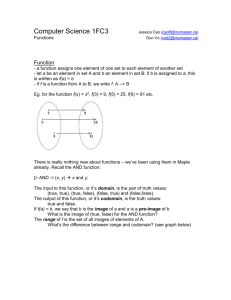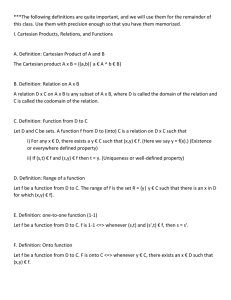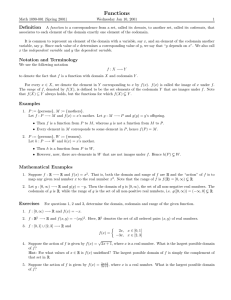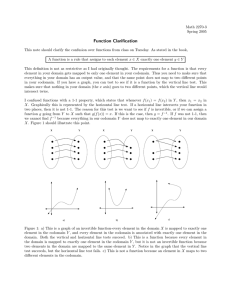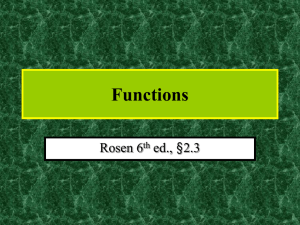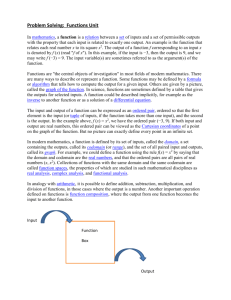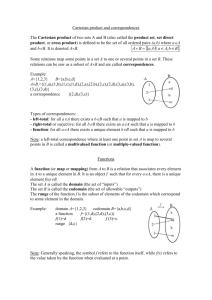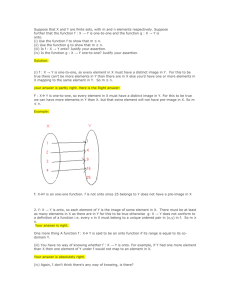Things to Remember Logic Truth Tables
advertisement
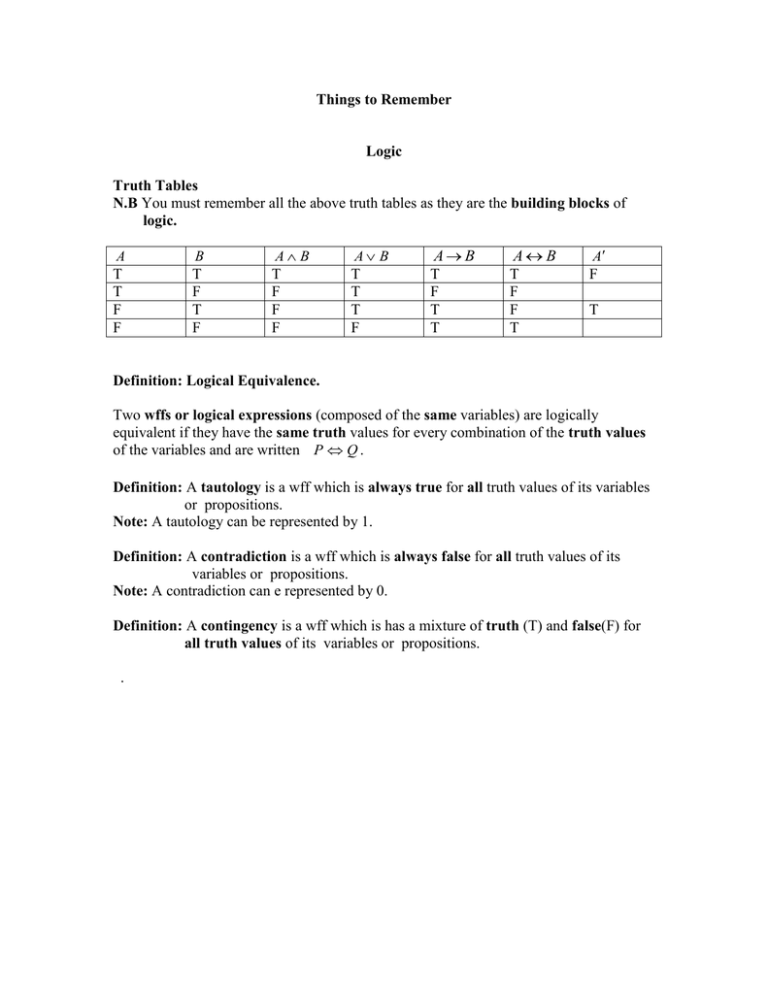
Things to Remember Logic Truth Tables N.B You must remember all the above truth tables as they are the building blocks of logic. A T T F F B T F T F A B T F F F A B T T T F AB T F T T AB T F F T A F T Definition: Logical Equivalence. Two wffs or logical expressions (composed of the same variables) are logically equivalent if they have the same truth values for every combination of the truth values of the variables and are written P Q . Definition: A tautology is a wff which is always true for all truth values of its variables or propositions. Note: A tautology can be represented by 1. Definition: A contradiction is a wff which is always false for all truth values of its variables or propositions. Note: A contradiction can e represented by 0. Definition: A contingency is a wff which is has a mixture of truth (T) and false(F) for all truth values of its variables or propositions. . Statistics Definition: Mean The mean denoted by x of n data values x1 , x2 , x3 , xn is i n x x2 x3 xn x 1 n x i 1 n i . Definition: Variance s 2 and Standard Deviation s : The variance s 2 of a set of data set is the average of the squares of the deviations of the data from the mean, that is if we have n set of data x1 , x2 , x3 ,, xn then s 2 x1 x 2 x2 x 2 x3 x 2 xn x 2 n 1 i n x i 1 i x 2 where x is the mean. n 1 The standard deviation s is the square root of the variance s 2 , that is in s x i 1 i x . n 1 Octal Code 0 1 2 3 4 5 6 7 000 001 010 011 100 101 110 111 0000 0001 0010 0011 0100 0101 0110 0111 2 0 1 2 3 4 5 6 7 Hexadecimal Code 1000 1001 1010 1011 1100 1101 1110 1111 8 9 10---A 11---B 12---C 13---D 14---E 15---F Simple Interest Thus the future value(FV or maturity value) of a simple interest investment of PV euros at an annual rate of r for a period of t years is FV PV (1 r * t ) This is the amount that you would have at the end of the period. You can also solve for the present value PV given the future value FV you expect at an interest rate r after a certain number of years t namely, FV . PV (1 r * t ) Compound Interest Thus we have the formula for Compound Interest namely, FV PV (1 i) n where i r and m r annual rate m number of compounding periods per year i rate per compounding period n Total number of compounding periods PV Pr incipal ( present value) FV Amount( future value ) at the end of n periods . Given the future value FV (or accumulated amount)we can find the present value PV (or principal) at a given annual rate r after a given number of compounding periods. We just reverse the formula FV PV (1 i) n to PV . FV FV (1 i ) n . (1 i ) n Functions Definition Let A and B be sets. A function f from A to B is a rule that assigns to each element of A exactly one element of B . The set A is called the domain and the set B the codomain . If f is a function from A to B we indicate this by writing f : A B , . In computing, many functions are not functions whose graphs are continuous curves like above but discrete functions ( usually given by arrow diagrams) as shown below. Example Consider the set A 1,2,3,namely the domain and the set B 1,2,3,4the Codomain and the discrete function f from A B defined as follows f : A B, by f (1) 3 , f (2) 2 and f (3) 2 shown in the arrow diagram below. f (1) 3 f ( 2) 2 f (3) 2 Note: 3 is called the image of 1 under f Note the domain is A 1,2,3,the codomain B 1,2,3,4 and the Range 2,3. This is a function since it is given by a rule and every element in the domain is mapped to an element in the codomain This is typical of the discrete functions in computing. Definition A function is onto if its range is equal to its codomain. The above function is not onto since its range 2,3 codomain 1,2,3,4. Definition A function is one-to-one if no two distinct elements of the domain have the same image. Above function is not one-to-one since the two elements of the domain 2 and 3 have the same image namely 2 in the codomain. The importance of the properties of (i) onto and (ii) one-to-one for functions is that these two properties ensure that the function has an inverse according to the following theorem Theorem If a function f : A B is (i) onto and (ii) one-to-one then f (x) has an inverse f 1 : B A . Example Consider the set A a, b, c,namely the domain and the set B 1,2,3the codomain and the discrete function f from A B defined as follows f : A B, by f (a) 2 , f (b) 1 and f (c ) 3 shown in the arrow diagram below. f (a) 2 f (b) 1 f (c ) 3 Now the above function f has an inverse f 1 : B 1,2,3 A a, b, c given by f 1 (2) a f 1 (1) b f 1 (3) c . You just reverse the process. The big deal is that if a function f is onto and one-to-one then it has an inverse f then you can go from f to f 1 and from f 1 to f . 1
